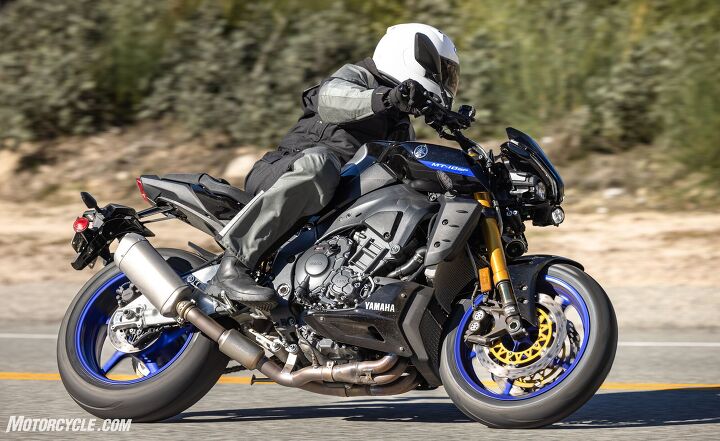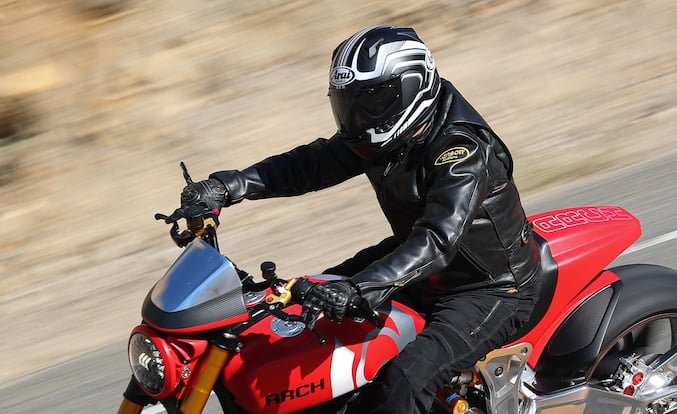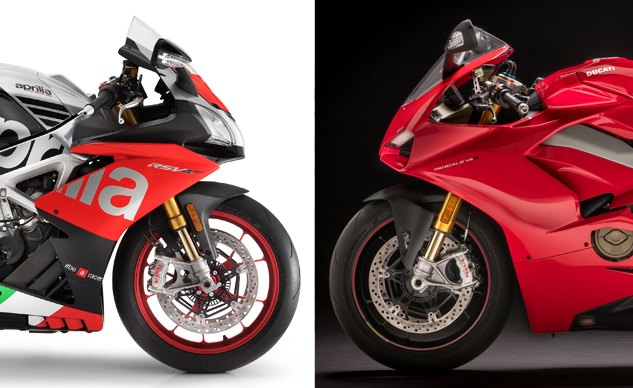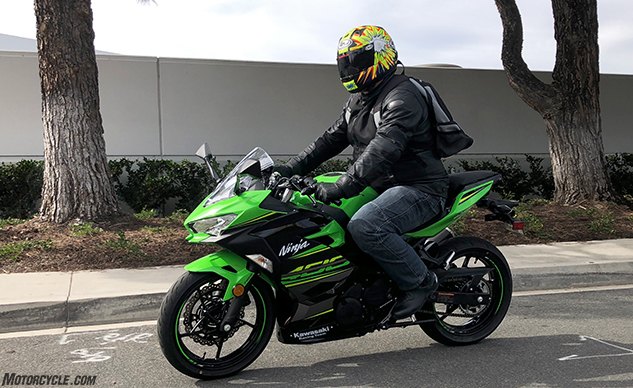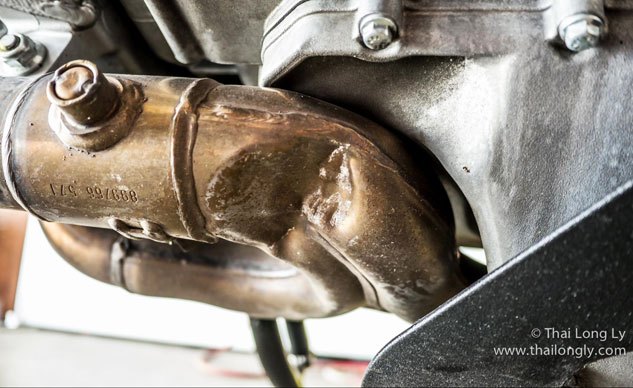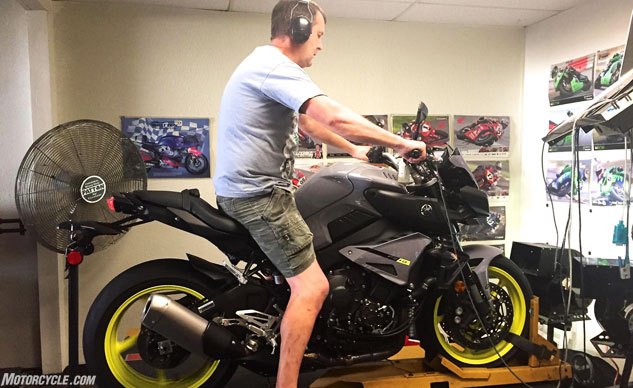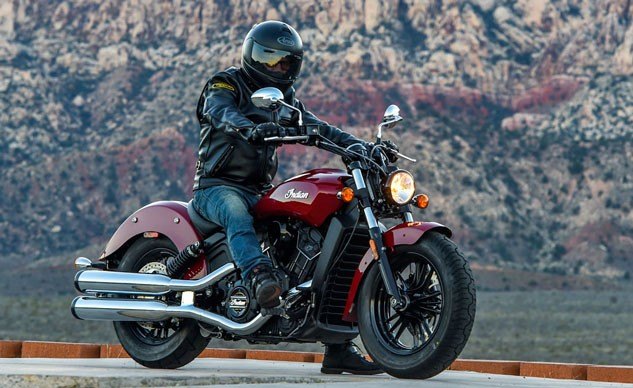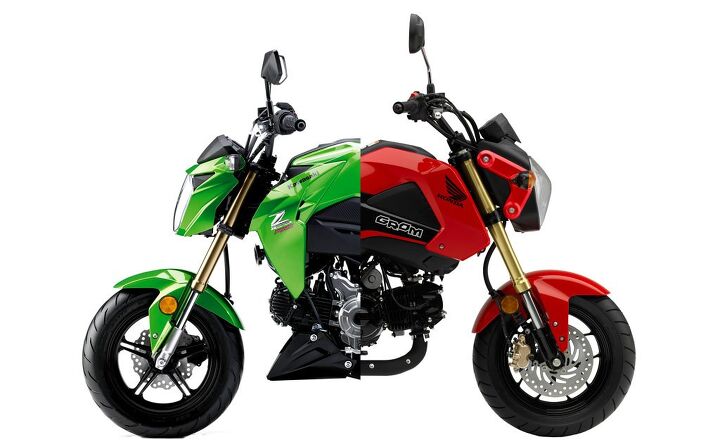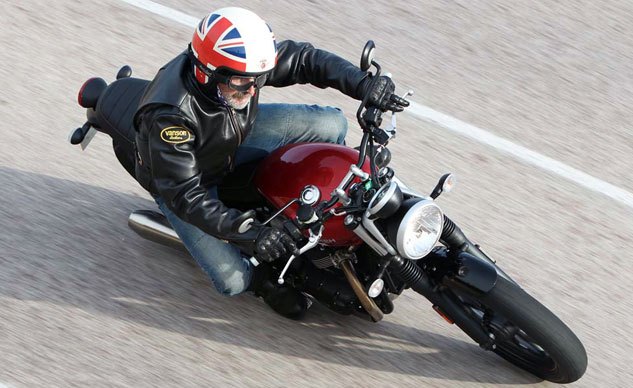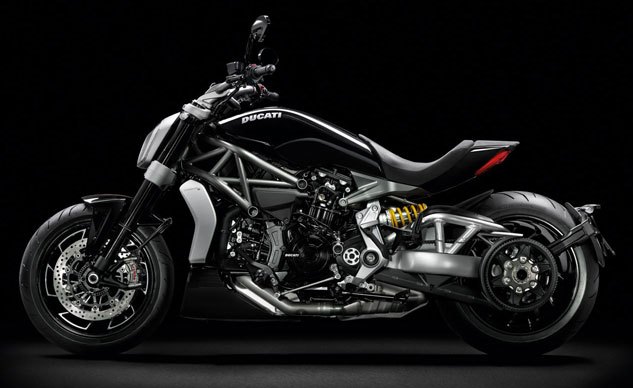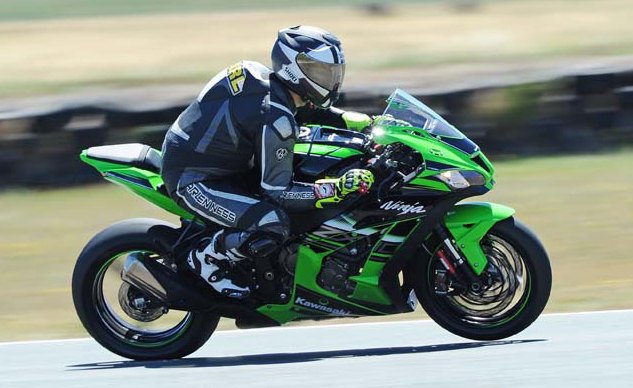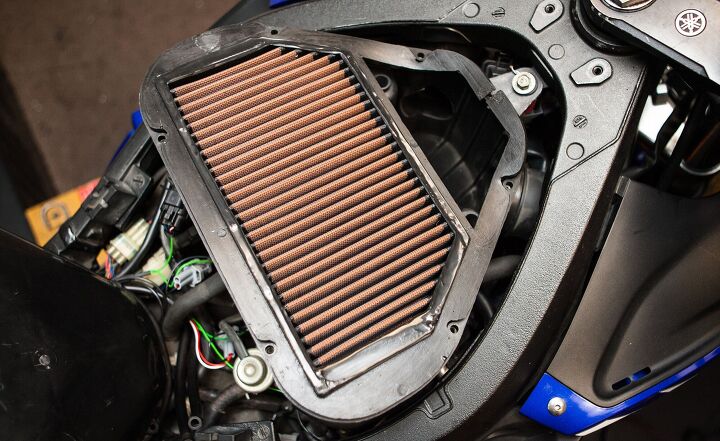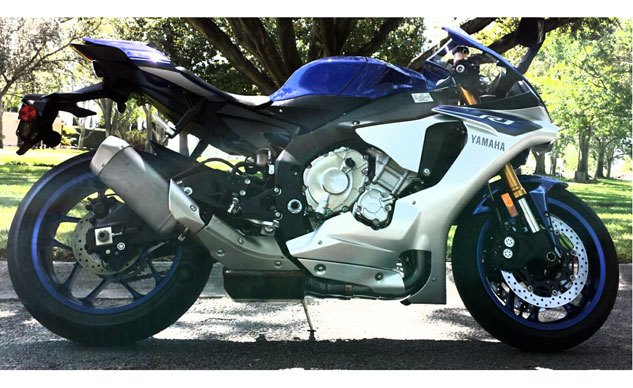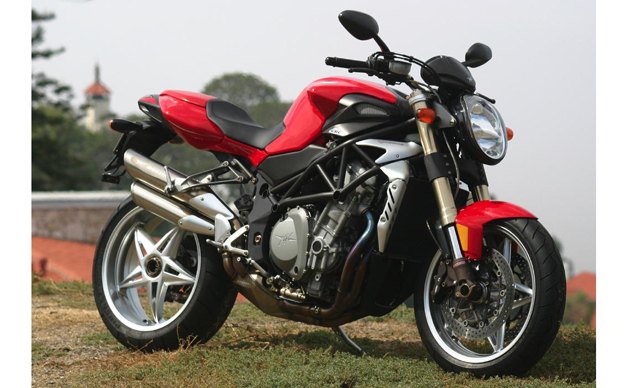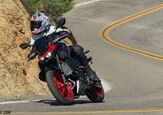#Dyno
Yamaha MT-10 SP Project Bike - Update 1
It’s been about a month since we introduced Motorcycle.com’s 2022 Yamaha MT-10 SP semi-long-term project bike. In case you forgot the premise of this whole thing, Yamaha offered us the opportunity to hang on to an MT-10 SP for an extended period of time, and since I have a soft spot for the bike, I decided to give it some tasteful upgrades to address some key weaknesses while also unleashing some trapped potential. The point here is two-fold: first is to see what the bike could do with some simple upgrades. Second is to not break the bank while doing so because otherwise, you could easily go buy one of the European competitors that would probably still spank this MT, stock.
Functional Fashion: The Best Leather Motorcycle Jackets
If there’s a piece of apparel most associated with motorcycling, it’s undoubtedly the leather motorcycle jacket. The leather jacket is part of our uniform, but even non-riders search the bins for cowhide when it’s time to dress up for Halloween, or down for any occasion that calls for cool. No matter what you ride, the best leather motorcycle jackets are versatile enough to look at home nearly anywhere, and on nearly anything. A premium leather jacket will never go out of style, and the more you wear a quality one, the more comfortable it will feel – there’s just something about leather that other materials can’t match. Bountiful and ubiquitous, with seemingly endless options to choose from, it would be impossible for us to feature every single jacket out there. So here we’ve gathered a small sampling of the best leather motorcycle jackets the market has to offer, listed in alphabetical order.
Aprilia RSV4 RF Vs. Ducati Panigale V4 S - Dyno Shootout
Without a doubt, the biggest news in the sportbike scene for 2018 is Ducati’s Panigale V4 and the emergence of a mass-produced four cylinder engine – the Stradale V4. While Ducati has finally left its beloved V-Twin engine behind (at least in terms of superbikes), there was no way the folks in Borgo Panigale would conform to tradition when it came to its new four-banger. For starters, as the name implies, the new engine is arranged as a 90º V4 – essentially multiplying its V-Twin tradition by two.
2018 Kawasaki Ninja 400: Exclusive Dyno Run and Measured Weight!
Kawasaki’s all-new Ninja 400 is ready to upend the small-displacement sportbike category by offering the triumvirate of appealing motorcycle characteristics: class-leading power, a reasonable price, and swanky good looks.
Does A Dented Exhaust Pipe Restrict Power?
So how does slamming a suicidal rock, thus spewing hot juicy oil all over your rear tire, sound to you as you’re flying down your favorite mountain road? Sorta frightening, right? Because it is. Ask me how I know. Then ask me which of my favorite four-letter words I chose to spit out of my helmet were once I realized that this could have been really bad. Reeeeeealllly reeeeeaaalllly bad. I was thrilled to be climbing off my bike by choice as opposed to a sudden unplanned eviction over the side of a mountain. Guardian angel, this round’s on me.
Yamaha FZ-10 Dyno Tested
Actually the first minute or so of this vid is a great graphic presentation of the Yamaha “Crossplane” crankshaft it introduced in its 2009 R1. Crossplane is a cool marketing word for a four-cylinder crank that scatters its four pistons equidistantly around its 360 degrees – each one 90 degrees apart – instead of everybody else’s flat, or 180-degree crank, where two pistons are at top dead center while the other two are at bottom dead center.
Indian Scout Vs Indian Scout Sixty on the Dyno!
You’ll remember we, okay I, first rode Indian’s new Scout Sixty last November, where we laid out the differences between it and the regular Scout. Besides a substantial reduction in price to $8,999 and the doing-away with of fifth gear, the Sixty gets, “a simple sleeving down of the bike’s excellent liquid-cooled 60-degree V-Twin, from 1133cc to 999cc (69 to 61 cubic inches)… accomplished with 6mm slimmer bores, down from 99 to 93mm diameter. Stroke remains 73.6mm, meaning this is still an oversquare Twin that doesn’t mind using its 4-valve DOHC heads to rev smack into the 8200-rpm limiter now and then if you so desire. Compression ratio for the smaller engine is a bit higher; up to 11:1 from the 10.7:1 of the 1133cc version.”
Kawasaki Z125 Pro Vs. Honda Grom - On The Dyno!
In my First Ride Review of the 2017 Kawasaki Z125 Pro I mentioned, “the Kawasaki, and its oversquare Single, feels like it has more bottom-end grunt compared to the Honda.” Of course, the Honda in question here is none other than the Grom.
Triumph Street Twin Dyno Results
At both the unveiling and riding introduction of Triumph’s new Street Twin, the manufacturer noted that the new 900cc engine made more torque – and at lower rpm – than the previous 865cc mill. At the riding introduction, Triumph expanded its claim to include the Street Twin producing less peak horsepower than the previous, smaller engine. So, imagine our surprise when we actually get our sweaty mitts on a production model Street Twin and dash it over to our local dyno shop – and learn that the new engine makes both more torque and horsepower than the most recent dyno run we have of the old 865cc engine.
2016 Ducati XDiavel Dyno Tested
The spinning steel drum does not lie: Ducati claims 156 horsepower at 9500 rpm for the XDiavel’s new 1262cc DVT (Desmo Variable Timing) L-Twin, and the MotoGP Werks Dynojet bears that out. The old rule of thumb is that rear-wheel hp (what the dyno measures) is generally about 10% less than crankshaft hp (what the manufacturers claim) on a chain-driven bike, and if that still applies then the Ducati is actually a few horses ahead of the game. Compared to the old Diavel, which never felt anything like slow, you’re looking at 10% more horsepower and 9% more torque.
2016 Kawasaki ZX-10R Review and Dyno Test
The chance to review an all-new motorcycle prior to the bike’s world launch is about as rare as a Vincent White Shadow, but that’s the opportunity our Australian correspondent, Jeff Ware, received late last November when he got to spin laps aboard Kawasaki’s all-new ZX-10R. Because the new 10R is the most exciting new sportbike of 2016, we jumped at the chance to publish Ware’s review so we could be among the first in the world to share riding impressions of this important new machine. Our review was cleverly titled “First First-Ride Review,” because Motorcycle.com’s official first-ride review was intended to be posted after the bike’s world launch.
MO Tested: Sprint Air Filter
What’s the first thing motorcyclists look for when modifying their bike? More power. So, when we got an email claiming a 1 to 4 horsepower increase from Sprint Filter air cleaners, we decided to check it out. Our test mule would be my beloved 2003 Yamaha R6 that is still – as far as the fuel and exhaust systems are concerned – basically stock. (In the interest of full disclosure, it does have a set of Factory Pro Velocity Stacks that I’d forgotten about until I opened the airbox.) What better way to finally get my 13-year-old 600 to the dyno to see how it compares to current generation sporting hardware?
2015 Yamaha YZF-R1 Tested On The Dyno!
I felt as giddy as a kid at Christmas when I heard Yamaha’s new R1 was prepped and readied for MO’s home-soil evaluation. We already knew it was ready to challenge the best of the best – our Troy Siahaan came back from its launch raving about how the R1 is resetting the bar in the stupefyingly magnificent superbike class – but I was anxious to find out for myself just how impressive it is.
Church Of MO – 2004 MV Agusta Brutale S On The Track, Dyno & Street
If there’s one thing you can count on in the world of motorcycledom, it’s that MV Agustas will always be beautiful. Case in point: the Brutale. In this case, the 750cc inline-Four Brutale S, designed by none other than the great Massimo Tamburini. In this week’s Church of MO feature we go back to 2004, and Sean Alexander’s impressions of the stunningly beautiful 750 Brutale. Sean was still at his fighting weight back then, AMA racing and all, which makes his thoughts about the MV all the more interesting. Does beauty translate into a winning street and track naked? Read on to find out. Also, be sure to check out the five-page photo gallery for a lot more pictures.



